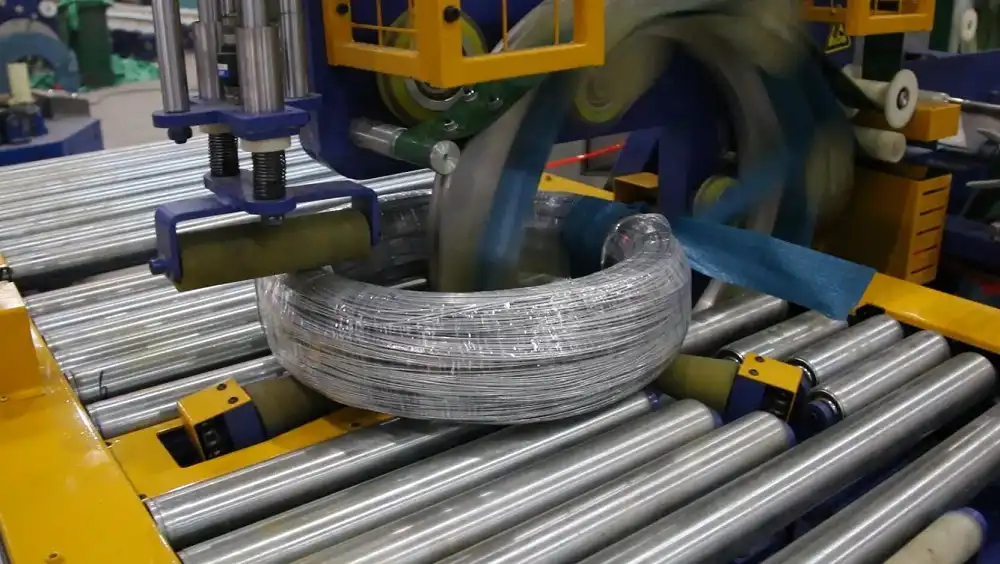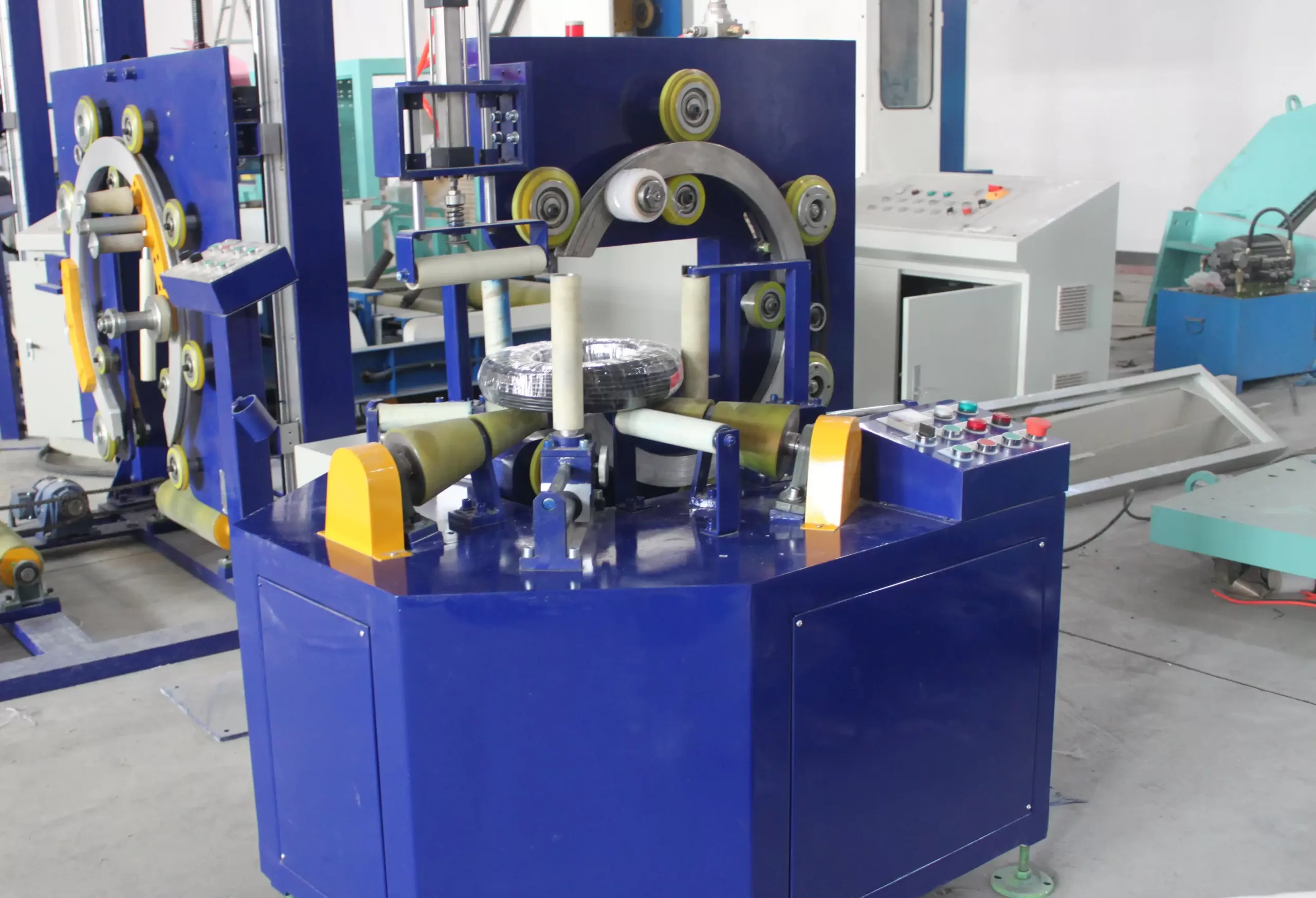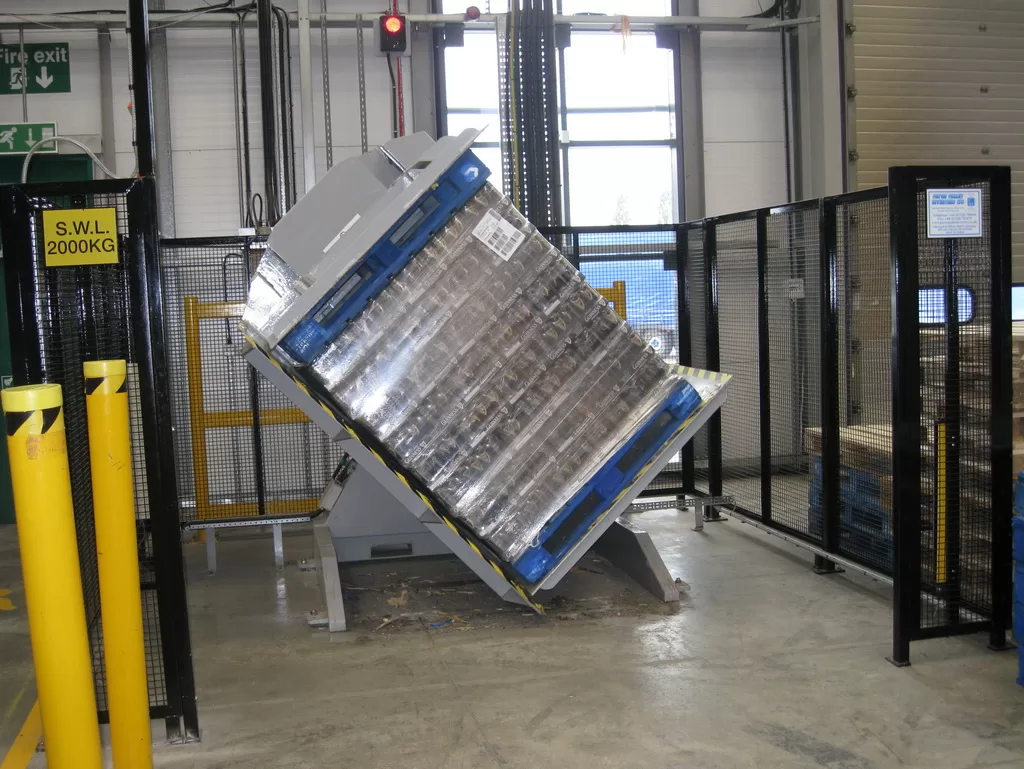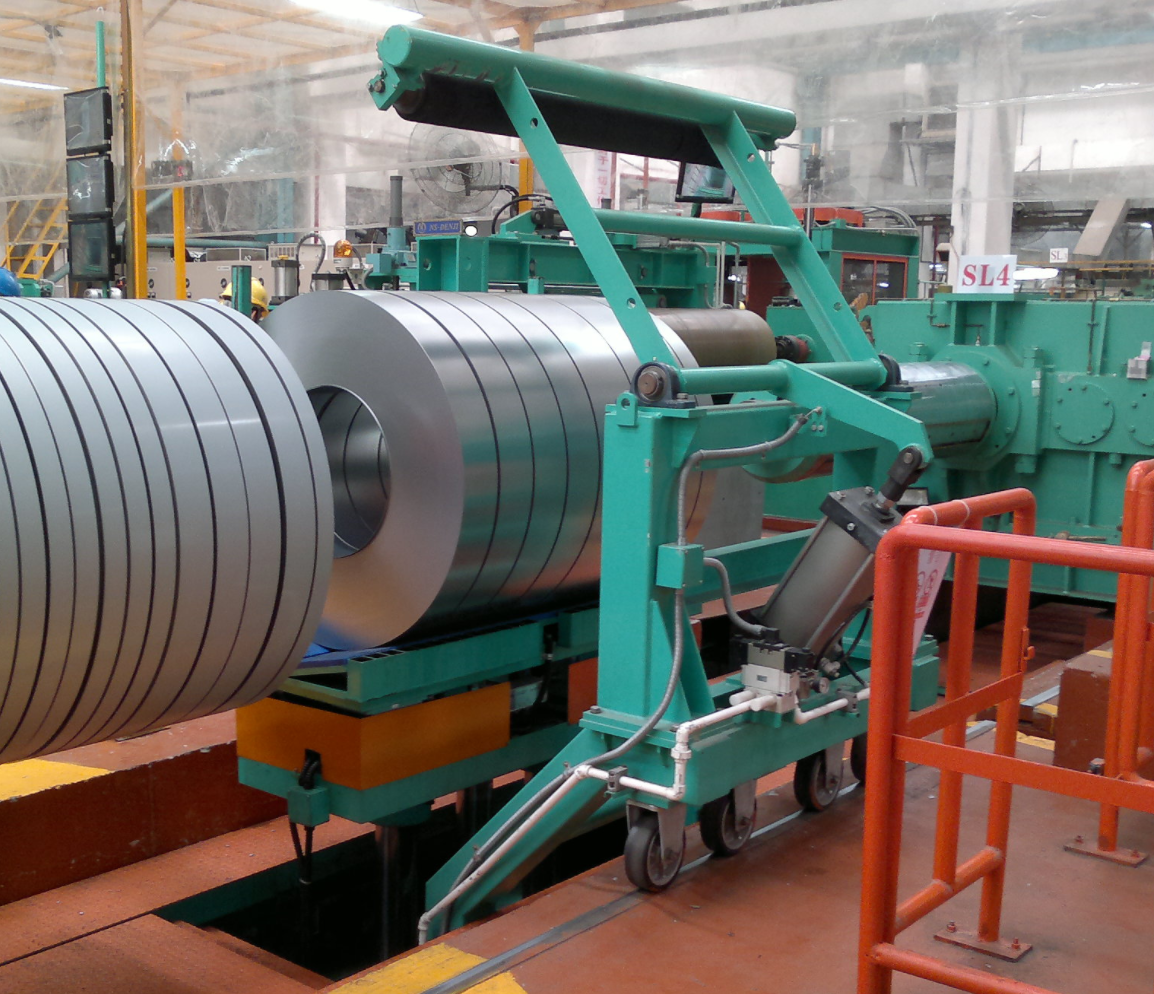Coil Packaging Materials: What You Need to Know
Steel coils are vital assets in many industries, but they’re highly susceptible to rust and damage during transit and storage. Are you facing costly losses from corroded products? This is particularly critical for export shipments where harsh environments pose significant threats. Effective coil packaging materials are essential to protect these valuable investments and ensure they arrive in pristine condition.
Effective coil packaging materials are crucial for protecting large, heavy steel coils from rust and physical damage during storage and transport, particularly for export. These materials, including various VCI (Vapor Corrosion Inhibitor) types like paper and film, create a protective barrier against moisture, oxygen, and contaminants. Selection depends on factors like transport method, coil properties, and storage environment.
Understanding the different types of coil packaging materials available and their specific applications is vital for ensuring maximum protection. From traditional methods to advanced VCI solutions, each offers unique benefits and considerations. Let’s delve deeper into the essential knowledge required to make informed decisions about safeguarding your valuable steel coils.
Why Effective Coil Packaging is Crucial
Steel coils are highly susceptible to damage and corrosion during transit and storage. Are you risking costly returns, rework, or even scrapping products due to inadequate protection? Effective coil packaging materials are not just an option; they are a critical investment to safeguard your valuable assets against environmental impacts and handling stresses.
Effective coil packaging is vital as large, heavy steel coils are highly vulnerable to rust and damage during transport and storage. Especially in import/export, salt contamination causes rust, severely impacting sales. Good packaging materials provide vital protection from environmental factors and handling damage, with methods varying based on transport, coil properties, and storage needs.

The Threats to Steel Coils: Rust and Damage Explained
Steel coils face a gauntlet of threats from the moment they leave the production line until they reach their final destination. The most insidious is rust, a natural electrochemical process where iron reacts with oxygen and water. This reaction is accelerated by contaminants like salts (prevalent in marine transport) and acids. When an electrolyte (like humid air or condensation) is present on the metal surface, it creates a ‘corrosion cell’ where electrons flow, leading to oxidation and the formation of iron oxide, or rust. This process starts on the surface but can penetrate the metal, compromising structural integrity and rendering the coil unusable. Even microscopic surface contaminants, often introduced during manufacturing or handling, can initiate and fuel this process, especially in localized areas causing pitting.
Beyond corrosion, physical damage is a constant risk. The sheer size and weight of steel coils make them challenging to handle. Impacts during loading, unloading, or transit can cause dents, deformation, and edge damage. Abrasion from shifting or contact with inadequate packaging materials can lead to scratches that break protective layers and create new sites for corrosion to begin. Environmental factors like extreme temperature fluctuations can cause condensation within packaging, providing the moisture needed for rust. Even seemingly innocuous packaging materials like untreated wood or standard corrugated cardboard can harbor moisture, acids, or chlorides, leading to "contact corrosion" where the coil touches these materials. Protecting against these multifaceted threats requires a comprehensive packaging strategy.
| Threat Type | Description | Impact on Coils |
|---|---|---|
| Rust/Corrosion | Electrochemical reaction (Fe + O2 + H2O) | Loss of integrity, surface devaluation, scrap |
| Physical Damage | Impacts, abrasion during handling/transit | Dents, scratches, deformation, edge damage |
| Environmental | Humidity, temperature swings, salt spray | Accelerates rust, condensation forms electrolyte |
| Contact Corrosion | Reaction with packaging (wood, untreated paper) | Localized rust spots, breaks protective layers |
| Contamination | Salts, acids, dirt, fingerprints, manufacturing residue | Initiates/accelerates rust, localized damage (pitting) |
Types of Coil Packaging Materials
The industry employs a diverse array of materials and methods to package steel coils, each designed to address specific protective needs. Understanding these options is key to selecting the most effective solution for your particular circumstances.
A variety of materials are used for steel coil packaging, primarily focusing on corrosion prevention and physical protection. These include OD/ID Protectors, various VCI papers (HDPE, Crepe, Coarse Cloth), VCI films (Power Stretch, Strong Fabric, Scrim Tight Film, Utex), and VCI poly bags/sheeting. The choice depends heavily on the required protection level, transport mode, and coil dimensions.

Coil packaging materials fall broadly into categories addressing physical protection, barrier properties, and corrosion inhibition. Physical protectors like OD/ID (Outside Diameter/Inside Diameter) protectors are rigid or semi-rigid materials fitted to the coil’s circumference and core to prevent mechanical damage during handling and stacking. Barrier materials, such as polyethylene film or wax-coated paper, prevent moisture and environmental contaminants from reaching the coil surface. However, these alone are insufficient as moisture can still be trapped inside the packaging or seep through imperfections.
This is where Vapor Corrosion Inhibitor (VCI) materials become essential. VCI-impregnated papers, films, and fabrics release protective molecules into the enclosed space around the coil. These molecules settle on the metal surface, forming an invisible layer that prevents the electrochemical reaction causing rust. VCI materials come in various forms tailored for specific applications: VCI paper is often used as an interleaving layer or for wrapping, available in different weights and with reinforcing layers (like scrim) or barrier coatings (like poly or wax) for added strength or moisture resistance. VCI films and poly sheeting are used for complete wrapping or as liners for crates and containers, providing both the VCI protection and a moisture barrier. Specialized VCI forms like stretch film offer convenient wrapping for large volumes, while VCI fabrics provide high strength and durability. The selection of materials depends on factors such as the duration and conditions of storage/transit, the specific type of metal, the required level of automation in packaging, and the budget.
The Power of VCI in Coil Packaging
Are you tired of rust damaging your coils despite conventional packaging barriers? Struggling with the mess and environmental impact of traditional oils? Discover VCI (Vapor Corrosion Inhibitor), a powerful technology that provides a clean, dry, and invisible shield against corrosion for your valuable steel coils.
VCI (Vapor Corrosion Inhibitor) packaging releases molecules that vaporize and deposit on metal surfaces, forming a thin, invisible protective layer. This layer interrupts the electrochemical process causing rust, shielding steel coils from moisture, oxygen, and contaminants without altering their properties. VCI works effectively in enclosed spaces, reaching hard-to-access areas for comprehensive corrosion prevention.

VCI Technology: How it Works and its Benefits for Coils
VCI technology represents a significant advancement in metal protection. At its core, VCI relies on compounds that possess a measurable vapor pressure at ambient temperatures. When placed in an enclosed space with metal objects (like a packaged steel coil), these VCI compounds slowly sublimate or evaporate, releasing protective molecules into the surrounding air. As these molecules circulate within the package, they are attracted to the metal surface due to their polarity. Upon contact, they settle and form an incredibly thin, often monomolecular, layer. This layer effectively passivates the metal surface, disrupting the flow of electrons and ions required for the electrochemical corrosion process to occur. Essentially, the VCI layer acts as a barrier at the microscopic level, preventing moisture, oxygen, and other corrosive elements from reacting with the metal itself. A key advantage is that this protection works in both the "contact phase" (where the VCI material touches the metal) and the "vapor phase" (where the VCI molecules reach the metal through the air), allowing it to protect even complex shapes and recessed areas that traditional coatings might miss.
The benefits of using VCI for coil packaging are numerous, particularly when compared to older methods like rust preventive oils. VCI packaging is clean and dry; coils packaged with VCI are immediately ready for use upon arrival, eliminating the need for costly, labor-intensive cleaning and degreasing processes. This saves significant time and expense, including hazardous waste disposal fees associated with oils and solvents. VCI is also environmentally friendly; many modern VCI formulations are non-toxic, recyclable, and free of volatile organic compounds (VOCs), heavy metals, and other harmful chemicals. VCI materials are available in various forms like papers, films, and poly bags, offering flexibility to suit different packaging needs and levels of automation.
| Feature | VCI Packaging | Traditional RP Oils |
|---|---|---|
| Application | Easy wrapping, bagging, or lining | Labor-intensive spraying, dipping, brushing |
| Cleanliness | Clean, dry surface | Messy, sticky surface |
| Post-Arrival Handling | No cleaning required, ready for use | Requires cleaning/degreasing (costly) |
| Environmental Impact | Often non-toxic, recyclable, low VOCs | May contain VOCs, hazardous disposal |
| Protection (Complex Shapes) | Molecules reach all surfaces (vapor phase) | Requires 100% direct coverage (difficult) |
| Safety | Generally safe for handling | Flammable, slip hazards, potential health risks |
| Protective Layer | Invisible molecular layer | Visible oily/greasy coating |
| Duration of Protection | Can provide protection for years in sealed package | Varies, can dry out or be rubbed off |
Choosing and Using the Right Coil Packaging
Selecting the optimal coil packaging involves more than just picking a material; it requires understanding the specific needs of your coils and their journey. But even the best material is ineffective if not used correctly. Learn how to choose wisely and implement proper practices.

Choosing the appropriate coil packaging materials and applying them correctly are paramount for ensuring effective protection. Choosing the right coil packaging involves matching the VCI type to the specific metal (ferrous, non-ferrous, multi-metal) and considering factors like required protection duration, transport conditions (especially humidity), and storage environment. Proper use is equally critical; ensure parts are clean, handle with gloves, use sufficient material (approx. 1 sq ft VCI per 1-3 sq ft metal surface), and maintain close proximity between VCI and coil surfaces. Several factors influence material selection. The type of metal is critical; some VCI formulations are specific to ferrous metals (steel, cast iron), others to non-ferrous metals (copper, aluminum, brass), and multi-metal VCIs exist for diverse assemblies. Consider the duration of protection needed – short-term storage requires less robust solutions than long-term warehousing or overseas transit. The transportation method and expected environmental conditions (humidity, temperature fluctuations, salt exposure) also dictate the need for moisture barriers alongside VCI. Higher humidity or potential for condensation necessitates materials like VCI poly film or wax-coated VCI paper.
Beyond material selection, proper application is key. Ensure the coils are as clean and dry as possible before packaging; surface contaminants like dirt, oils, or fingerprints can interfere with VCI action ("Dirty Dozen" point 1, 5, 6). Always handle metal parts with clean gloves to avoid transferring corrosive residues. Use enough VCI material; a general guideline is at least one square foot of VCI material per one to three square feet of metal surface area, or one square foot per one cubic foot of void space within the package. Maintain the VCI material’s proximity to the coil surface, ideally within 12 inches, to allow effective vaporization and protection. If using wood crates or corrugated boxes, use VCI paper or poly sheeting as a barrier to prevent contact corrosion ("Dirty Dozen" point 2). Package coils as quickly as possible after cleaning or production, and store unused VCI materials properly in a cool, dry place away from direct sunlight ("Dirty Dozen" point 9). Consistent use, even during seemingly non-humid months, ensures continuous protection against unforeseen environmental changes or extended storage periods. Consulting with packaging experts can help tailor a solution and train staff on best practices.
Conclusion
Effective coil packing line and packaging materials are paramount for preserving the value and integrity of steel coils throughout their journey. As we’ve explored, threats like rust and damage are significant, but advanced solutions like VCI technology offer clean, effective protection. By understanding the available materials, choosing the right VCI for your specific metal and application, and implementing proper handling practices, you can prevent costly losses and ensure your coils arrive in pristine condition. Investing in quality packaging is an investment in your product’s success.









